Features
I’m an Indigenous Chinese Australian!
Published
1 year agoon
I’m an Indigenous Chinese Australian! (Part 1)
This year marks my 30th year living in Australia. Through writing, volunteering, and social dancing, I’ve made countless friends from all walks of life: Australians, Europeans, Japanese, Koreans, Vietnamese, Filipinos, Malaysians, North Americans, Indians, New Zealanders, and even South Africans. I’ve had great teachers, good friends, bad influences too, all from across the globe. Life has been vibrant, interesting, and long. However, I regret that not one of my friends is an Indigenous Australian, and I know very little about Indigenous communities, their culture, and traditions. This regret often leaves me feeling empty, as though something is missing. Over the years, I’ve only met two Indigenous women: one was a friend’s girlfriend whose grandmother was Indigenous, but she was fair-skinned with delicate features, and there was no outward sign of her Indigenous heritage. The second was Professor Marcia Langton AO, a professor at the University of Melbourne. I first saw her in 2008 when I interviewed the famous Australian painter Zhou Xiaoping (see my article “In Search of Dreams in the Indigenous Dreaming World” in Issue 85 of Sameway). I met her again at a Lunar New Year banquet at Zhou’s house the same year. In 2012, at the screening of a film about Zhou Xiaoping (see my article “Ink and Ochre” in Issue 314 of Sameway), I met Professor Langton again, but both times, I missed the chance to speak with her. In recent years, this sense of loss and regret has grown stronger, eventually prompting me to begin a quest to learn more about the First Nations of Australia.
Indigenous Australians, a term that refers collectively to Aboriginal Australians and Torres Strait Islanders, are the descendants of the original inhabitants of Australia before European colonization. The term “Indigenous Australians” is a broad one, encompassing many different groups with significant distinctions between them. They may not share close connections or common origins, with each community having its own unique culture, customs, and language. It’s estimated that when Europeans first arrived, there were around 250 Indigenous languages. Now, only about 120 to 145 languages remain, most of which are endangered, with only 13 considered secure. Most modern Indigenous Australians speak English that is influenced by Indigenous vocabulary, pronunciation, and grammatical structures, a form known as Aboriginal English. Estimates of the population at the time of European settlement vary, with some suggesting between 318,000 and 1,000,000 people. They mainly lived in the southeast, which mirrors today’s population distribution. The current Indigenous population is 798,365, with 73% identifying as Christians, 24% having no religion, and 1% adhering to traditional Indigenous beliefs. There is no academic consensus on the relationship between the first inhabitants of the Australian continent and modern Indigenous Australians. However, most scholars agree that the earliest human remains found in Australia date back between 64,000 and 75,000 years, making them descendants of the earliest groups to leave Africa for Asia. Since 1995, the Aboriginal flag—red and black with a yellow sun—and the Torres Strait Islander flag—blue and green with a headdress symbol—have been recognized as official national flags in Australia. (Note 1)
Last week, through a friend’s introduction, I had the opportunity to learn more about Indigenous culture via several Australian television programs. The stories I’ll share here are based on ABC broadcasts (May 2020).
The Aboriginal Chinese Doll
I’m Brenda, an Elder of the Bidjara-Wakka Wakka nations. At 68 years old, I’ve always been curious about Chinese culture. Why? Because my grandmother used to call me “Chinese Doll.” I found the answer when I was four years old. It was the first time I discovered that I had Chinese ancestry. One day, while playing with other kids, I asked my grandmother, “Why do you call me Chinese Doll?” She told us that we were descendants of Chinese people. We continued asking, and she explained that my great-great-grandfather was Chinese. I grew up in Gayndah, a small town about 350 kilometres north of Brisbane, where my mother’s family are the traditional custodians of Wakka Wakka Country. Apart from that conversation with my grandmother, Lucky Law, and the taste of the fried noodles my mother May used to make, I knew very little about my Chinese roots, and even less about my mysterious Chinese great-great-grandfather. I couldn’t learn much from Lucky, as marriages like hers were seldom discussed back then. I only asked that day out of curiosity, but that curiosity has stayed with me, leaving a big gap in my life.
The First Generation of Chinese Shepherds
I’ve worked as a part-time teacher at a public school in Queensland for nearly a decade. A few years ago, I started exploring my family history in my spare time. My family tree reveals that one branch can be traced back to my great-great-grandfather John Law. He arrived in Australia around 1842 as a shepherd from Xiamen. He worked in the Gayndah region, where he apparently met my great-great-grandmother, and they married. It turns out I’m about one-fourteenth Chinese. In the 1840s, around 3,000 Chinese labourers, mainly men and boys, were transported from Xiamen to Australia to work as shepherds, spreading across modern-day Victoria, New South Wales, and Queensland. Dr. Maxine Darnell has been tracing the history of these shepherds, who were brought under five-year contracts and worked under harsh conditions as part of the first organized wave of Chinese labour to Australia. They helped meet the labour shortage after convict transportation to Australia ceased in the 1840s, before the influx of Chinese gold seekers in the 1850s and 1860s. As contract labourers, they were bound to their employers, unable to freely leave for the goldfields like many free workers. While little is known about the reasons behind their migration, it coincided with China’s recovery from the Opium War, when the lure of a better life must have been appealing. The story of labourers seeking a better life is a timeless one.
From Hostility to Intermarriage
The interaction between Chinese and Indigenous Australians dates back at least 150 years, though much of this history remains undocumented. Dr. Sandi Robb has been researching the relationships and marriage patterns between Chinese men and Indigenous women in Queensland. According to Dr. Robb, the early relationship between the two communities was fraught with “hostility and fear.” From the Indigenous perspective, the Chinese were unfamiliar people, different in appearance and dress, trespassing on their land without permission, thereby violating Indigenous law. However, over time, Indigenous marriage customs began to break down, and instances of intermarriage with other ethnic groups appeared. By 1890, Indigenous women were often left with no choice but to marry outside their communities due to the loss of traditional marriage partners, often due to violence. Both the Indigenous and Chinese were marginalized and looked down upon by white settlers. John Law was one of the few Chinese shepherds who married an Indigenous woman. Their daughter, Kate Law, married Chinese shepherd James Coy in 1877, and they had 11 children, including my grandmother, Lucky Law.
Indigenous people and Chinese workers formed friendships and connections that bridged their worlds. Both groups faced discrimination, and like today, that prejudice still affects both Indigenous Australians and Chinese. I believe that both groups learned much from each other, including cultural practices and agricultural knowledge related to land and cattle. In Gayndah, there were also orchards and citrus groves. In 2019, the Queensland government recognized the contributions of Chinese shepherds in irrigation and crop production in the Darling Downs region.
The Quest for Chinese Roots
My journey to trace my family history would have been much more difficult without the help of a Chinese friend. In 2018, I met a young Chinese man named Xianyang Tang on Facebook, and we quickly became friends. Over the past two years, with his help, I’ve uncovered many unknown aspects of my family history. Xianyang knew how deeply I wanted to find at least one relative and learn more about my great-great-grandfather’s origins, so he helped connect me with the Luo clan in Xiamen and local Chinese people. However, the search hit a roadblock when we couldn’t confirm which branch of the Luo family my ancestor belonged to, possibly due to the destruction of Luo family records during the Cultural Revolution. Xianyang was moved by my determination to uncover my roots and volunteered to help me. He visited me during my illness and even bought shoes and hats for my children. To me, he’s like family. He believes that my ancestors came from the Luo clan in Xiamen, but the search continues.
I’ve always felt proud of my identity. I have a large family descended from John Law, and none of us has ever denied our Chinese heritage. My dream is to visit China, especially Xiamen, to see it for myself and imagine the footsteps of my great-great-grandfather. While I know a lot about Indigenous culture, I’m part of two cultures, and I’ve decided to explore that other half.
Since the 19th century, Chinese and Indigenous Australians have walked side by side with untold stories!
Hi, I am a Chinese Aborigine in Australia! (II)
Recently, I had the pleasure of meeting CityMag and Ngarrindjeri (multidisciplinary) artist Damien Shen on the program to talk about his upbringing and what it means to be Aboriginal and Chinese.
Yellah Fellah: The Yellow-Skinned Family Man
Yellah Fellah is a colloquialism, an Australian term for yellow people. I, Damien Shen, am what Australians call Yellah Fellah, the yellow-skinned guy. However, my Aboriginal and Chinese backgrounds are deeply connected, and my Chinese heritage played an important role in my childhood. I am not sure where I would be today without the benefit of my Chinese heritage. My father was born in Hong Kong but was sent to boarding school in Adelaide. My grandparents thought the Communists would soon take over Hong Kong, so my father’s sister was sent elsewhere and then he was sent to Australia. I was born in Adelaide and my grandparents, who lived next door, were important people in my childhood. I think as I got older I appreciated more the Chinese side of things, that they were able to build up such structures, things that happened in my father’s life and so on. My Chinese grandmother felt it was her duty to keep order in the home – breakfast would be brought out at a certain time and dinner was always at 6pm. Grandparents provide a safe structure for children to live in. Although proud of my Chinese heritage, I admit that growing up in Australia with undeniable racism against Asians was challenging. I don’t speak Chinese because when my father came here, there was a lot of racism, so he was like, “No, you’re speaking English.” He wouldn’t encourage us to speak Chinese. At home he spoke Cantonese, and my grandparents spoke Cantonese, Mandarin and Shanghainese, and then they would go around the table and speak English to us. I recall my first job at a Chinese restaurant, where it was harder to fit in because I didn’t know the Chinese language. I was perceived as someone with long hair who didn’t speak Chinese, which was almost a bit of a novelty to the Chinese. I was there, but never really connected with the Chinese.
My mother’s Ngarrindjeri ethnicity, my Aboriginal heritage, was also crucial to my childhood. Growing up, I always knew I was part of an Aboriginal community and had many Aboriginal cousins with whom I spent a lot of time. One of those family members was Uncle Moogy. Moogy, who everybody knows – he’s my mom’s brother, so he’s actually my real uncle, and I grew up with him. There were always a lot of children in his house and we always spent the night there, so it was always very fun and memorable and I’m still very close to him. Although I now appreciate my Aboriginal and Chinese heritage, there are still struggles, especially at a young age. When I was in about 10th grade, I encountered a lot of racism in terms of being Asian or Aboriginal – basically, “they” had two ways of dealing with me. Then I changed schools and things changed immediately because I went to a very multicultural school. Suddenly, I didn’t have that pressure to ‘stand out’. It wasn’t until I was older that I started researching my Aboriginal heritage. As you get older, you start to think more about genealogy, history and things like that. …… It’s so fascinating when you look at what it means to be an Aboriginal person with family ties from a genealogical perspective. Anyone you meet, you call each other by name, but you’re not quite sure how far apart we are – are we really cousins? Then, on the other hand, you see what being Aboriginal means politically, historically, what happened to the Ngarrindjeri people, so part of my work deals with that. I looked back at my own life in two different contexts and felt blessed. I was lucky to be able to experience it through two lenses: dual identity, or dual background – it’s an interesting thing. As I’ve experienced, you don’t always fit into the Aboriginal community environment, especially when I was young, I felt that. As I’ve gotten older, I’ve gotten to know more Asian Aboriginal people, and we all look the same.
Yellah Fellah for OzAsia explores storytelling through an Indigenous Asian lens.
Yellah Fellah for OzAsia, an art exhibition curated by Catherine Croll, is on display at the Adelaide Festival Centre in 2023. This fascinating and inspiring exhibition featured the work of four different artists with Asian and Aboriginal traditions. I am exhibiting my own work alongside Gary Lee, Caroline Oakley and Jason Wing to show our personal interpretations of our backgrounds through the art form, which is essentially a gathering of many artists with Asian and Aboriginal traditions. For me, it’s Chinese and Aboriginal, and I think the artists will be proud of this mix of hybrids. I don’t speak for any other artist. …… Having a Chinese and Aboriginal heritage is something I’ve always been extremely proud of. You don’t see as much Aboriginal Chinese in South Australia as you do in the north of Darwin, there’s more of a mix of Asian Aboriginal cultures, but I’ve felt it’s quite unique here for a while now, so that’s cool. Curator Catherine says Asian-Australian relations began centuries before the European colonization of Australia, when Aboriginal people in the Northern Territory began to build a sea cucumber trading network with Malaysia and then on to China. I created a pewter skull fragment at an anatomy lab in Virginia entitled Life Behind the Pen, which is a history of the theft of human remains – many of the Ngarrindjeri people’s remains were stolen and shipped overseas. Uncle Moogy had a huge influence on a large group of Aboriginal leaders who travelled abroad to find these remains and repatriate them to Australia. My work here embodies that idea, and the photographs that Uncle Moogy and I have deliberately taken in this ethnographic way are like a real classic style of documenting things at a certain point in time, kind of like a drama of that history. The artwork called “Portraits” was a personal favorite of City Magazine, black and white portraits of my grandparents, sisters and uncles. Then I was inspired to organize a painting workshop with an American, and I thought, I don’t mind documenting all the stories around my mom. And then on the other hand, I’m going to document my Chinese grandparents and my sister as part of this series, linking the Chinese and Australian Aboriginal elements.
Chinese Aboriginal Women Writers
Not long ago, I saw some exciting news on SBS Chinese TV: Ms. Alexis Wright, a Chinese Aboriginal woman, won $60,000 and the Stella Prize for non-binary writers this year for her novel Praiseworthy, which beat out 227 entries. 2018 is the year that she writes about Aboriginal chiefs. In 2018, her collective memoir of Aboriginal chiefs, Tracker, also won the Stella Prize, making her the first author to win the award twice. She also won the Miles Franklin Award, Australia’s highest literary prize, for Carpentaria. Described by the New York Times as “the most ambitious and accomplished Australian novel of the century”, the 700-page book has been described as a great book in many ways, telling the story of the John Howard. Howard government’s 2007 military intervention in a Northern Territory community, the story of a small town whose inhabitants have been struck by a haze, and the story of the Aboriginal people who have been forced to live with the government’s military intervention in their community. This is a story of Aboriginal ancestry and ecological disaster. The characters’ reactions to the situation are allegorical, ranging from the comic to the tragic: one man devises a plan to replace Qantas with five million donkeys across Australia, another dreams of being white and powerful, and a third, apparently named Aboriginal Sovereignty, becomes suicidal. The judges were unanimous in stating that readers would be inspired by the aesthetic and technical qualities of Worthy of Praise and struck by Wright’s staccato rhythms of satirical politics, and that the award was rightfully given to Wright.
Challenge Yourself
Wright made a commitment long ago to challenge herself in whatever she writes, and her ambition has grown over the years. She began writing this novel about ten years ago, much of it during her tenure as Boisbouvier Chair of Australian Literature at the University of Melbourne. The process required Wright to pause and restart many times as she tried to evoke the slow pulse of central and northern Australia, to capture the scale of the period and the immense difficulties of the time, to challenge the reader’s indifference and to try to replace it with a deeper understanding. In an interview with the Australian Associated Press AAP, Wright pointed out that there is no harm in exercising the brain through the reading of good books. People are happy to go to the gym for a good physical workout, and there is no harm in a good workout for the mind.
Chinese Great-Grandfather & Native Great-Grandmother
“I come from one of the greatest storytelling worlds,” Wright said at the Stella Prize ceremony, “We are a culture of storytelling. Some of the most important, richest and longest-running epical law stories belong to the indigenous cultures of this land.” Wright, 73, is of Chinese descent. His great-grandfather came from Kaiping, Guangdong Province, to make a living in the Gulf of Carpentaria, a remote region in northern Australia, following the gold rush of the 19th century, and later married his Waanyi Aboriginal great-grandmother. Wright was invited to Shanghai for Australian Writers’ Week in 2018 and revealed in a media interview, “My great-grandfather was Chinese, but I don’t know him or the exact location of his hometown. I think it was somewhere in Kaiping, Guangdong. In the 19th century in Kaiping, a lot of Chinese people left their hometowns and went to the United States, Canada and other places to look for gold. Great-grandfather brought a lot of knowledge about China to the Gulf of Carpentaria, and he taught community members about irrigation and farming and growing vegetables.” She made a trip to Guangdong in 2017 to search for her roots, but unfortunately was unable to find any trace of her great-grandfather, after all, it was too long ago. Her books are available in Chinese translation, including the Franklin Award-winning Carpentaria and the full-length novel The Swan Book.
Bridging the Gaps in Australian History
During an unusual trip to the Northern Territory in 1988, renowned Australian painter Zhou Xiaoping was rescued by three Aboriginal teenagers when he was lost on a vast sandbar, which initiated his intense interest in Aboriginal culture and profoundly influenced his subsequent works, making Aboriginal people the only protagonists of his paintings. Through understanding, respect, and sincerity, he broke the barrier and formed decades of friendship with the Aborigines, making friends with Jimmy Chi, a Chinese Aboriginal musician, and Peter Yu, a professor. (See my articles “Seeking Dreams in the Aboriginal Dream World”, “Ink and Ochre”, and “Exploring Aboriginal History of Chinese Descent” in the 85th, 314th, and 665th issues of The Wayfarer) In 2022 Mr. Zhou initiated a project, Exploring Forgotten History, which is a project to explore the history of Aborigines in China, and to explore the history of the Chinese Aborigines in the world of Aborigines in the world of Chinese culture and culture. In 2022, Mr. Zhou initiated a project entitled “Exploring Forgotten Histories” to study Aboriginal people of Chinese ancestry, the significance of which is to fill in the gaps in Australian history. In the study of Chinese history, there is a large amount of information on the Chinese gold rush, but the relationship between the Chinese and the Aboriginal people is seldom covered. Why is it that in the early gold rushes in Bendigo and Ballarat, Victoria, there were not many intermarriages between the Chinese and Aboriginal people, and why are there not many Aboriginal descendants left behind? This is an important part of our history that we are gradually forgetting. Mr. Zhou’s research and the emergence of Aunty Brenda Kanofski, Damien Shen, Alexis Wright, Jimmy Chi, Peter Yu and other Aboriginal people of Chinese ancestry are like a jigsaw puzzle, putting together a picture of the past that has rarely been talked about or forgotten, showing the rich and complex interactions between the descendants of two of the oldest civilizations in the world, the Bendigo and the Ballarat. It shows the rich and complex interactions between the descendants of two of the world’s oldest civilizations. Will all this contribute to the integration of Australia’s diverse peoples and the harmony of its cultures? We look forward to it!
Knowing, Understanding and Respecting Aboriginal Culture
As we enter the month of May, the message of “Reconciliation” has appeared frequently in the media. What is reconciliation? Why Reconciliation? How to reconcile?
According to the Oxford Dictionary, “Reconciliation” means to end a disagreement or conflict with someone and start a good relationship again. But in Australia the concept of reconciliation is not so simple. Aboriginal and non-Aboriginal Australians have always tried to reconcile their differences, and Reconciliation is of great importance and significance to the nation. National Sorry Day is celebrated on 26 May each year, followed by National Reconciliation Week from 27 May to 3 June. The start and end dates of the week are historically significant, and are designed to promote the reconciliation of Australia’s Aboriginal and Torres Strait Islander peoples. The week begins and ends with historically significant dates to promote reconciliation between Aboriginal, Torres Strait Islander and non-Aboriginal Australians. This year, the theme for National Reconciliation Week 2024 is ‘Now More Than Ever’, and now more than ever, we have the opportunity to think about how we can use this knowledge and these connections to create a better Australia. Let’s learn and reflect on our shared history, culture and achievements with the Aboriginal community through the presentations of SBS Chinese Aboriginal reporter Mr. Ryan Liddle and CEO of Reconciliation Australia (National Reconciliation Association Chief Executive Officer) Aboriginal Ms. Karen Mundine.
History of Reconciliation Week
Reconciliation between Aboriginal and non-Aboriginal Australians can be traced back to the arrival of the Englishman James Cook in 1770; it is also thought to have begun with the civil rights movement of the 1960s, and was formalized with the 1991 Royal Commission into Aboriginal Deaths in Custody. Finding that too many Aboriginal and Torres Strait Islander people were incarcerated and often detained, the commission submitted a report with more than 300 recommendations to address the crisis. While many of the recommendations have yet to be adopted, the last recommendation in the report, No. 339, stands out: initiate a formal reconciliation process. The Aboriginal Reconciliation Commission Bill was passed by Parliament with the support of both the government and opposition parties, and in 2001 the Commission was replaced by a new organization, Reconciliation Australia, which is still in operation today. Before the handover, two key events marked new beginnings, signalling a promising new era. Karen Mundine said: “We’ve seen governors, territory leaders, federal governors and prime ministers from all states come together to make a commitment to the spirit of reconciliation, and what we really need to do is to build positive relationships, to make sure that Aboriginal and Torres Strait Islander people are seen as Australians, the first Australians, and that we are the oldest continuous culture in the world, and that we celebrate this uniqueness and we are proud of it. We celebrate this uniqueness and are proud of it. Ryan Liddle said: “On this day, this week, Reconciliation Australia was born, this was our starting point, nearly a quarter of a million Australians marched on the Sydney Harbour Bridge in support of reconciliation on a freezing cold and windy morning, and it was a truly transformative moment, a moment of unprecedented support from a wide range of communities to usher in a millennium of new opportunities to join together in a common journey to improve race relations. Since then we have had many successes, launching thousands of Reconciliation Action Plans, raising awareness of Aboriginal issues amongst the general public and generally improving the overall image and status of Aboriginal people in Australia.”
The most significant moment was the government’s action on February 13, 2008, when then Prime Minister Kevin Rudd said in Parliament, “We apologize for the laws and policies of successive Parliaments and governments that have caused deep grief, pain and loss to our fellow Australians. Prime Minister Rudd apologized to the nation, and as the world watched, there were cries of relief, tears of joy and sadness, and many Australians took to the streets holding up signs that read: I’m Proud to say Sorry! This day is known as National Sorry Day in Australian history. The next big push for reconciliation came about a decade later, in late May 2017, when a citizen-led Aboriginal National Constitutional Conference, including Aboriginal leaders, academics, social activists and others from across the country, worked hard to reach a rare consensus to constitutionally authorize the creation of an Aboriginal voice in Parliament, a treaty, and the establishment of a Truth Commission. For Aboriginal people, this sovereignty is a spiritual concept that has never been ceded or extinguished, and exists alongside the authority of all levels of government.20 In October 2023, a referendum to affirm the Aboriginal and Tortugas Channel Islander National Congress failed, and Australians voted down the establishment of an Aboriginal and Tortugas Channel Islander National Congressional Voice.
Respect for Aboriginal Etiquette
Why is it important to show respect for Aboriginal and Torres Strait Islander ceremonies? Because an understanding of these ceremonies can affect our behaviour and our relationships with Aboriginal people. Exploring the richness of Aboriginal traditions, getting Aboriginal etiquette right and learning Aboriginal and Torres Strait Islander customs are fundamental to respecting Australia’s heritage and the land we all live on. Mr. Thomas Mayo, advocate and writer for the Kaurareg, Kalkalgal & Erubamle peoples, introduced the five steps to get Aboriginal etiquette right, to reconcile and to become one.
Ⅰ. Introduce yourself appropriately
Julie Nimmo says, “When I introduce myself to other Aboriginal people and Torres Strait Islanders, it is important to say what people and family I belong to. When we talk about family, we talk about our ancestors from the past, but when we meet people from another country, we often introduce ourselves as Aboriginal or Torres Strait Islander or Aboriginal Australians”. Thomas Mayo said, “I would introduce myself as both Aboriginal and Torres Strait Islander because of family ties. Torres Strait Islanders are more closely related to Pacific Melanesians, and Aboriginal Australians are from the Australian continent, and we have different cultures and languages.
- Never abbreviate
Properly refer to Aboriginal people by referring to Australia’s first inhabitants through terms such as ‘Aboriginal’, ‘native’, ‘Torres Strait Islander’ and ‘land’, with the first letter of each title capitalized as a sign of respect. Never abbreviate the terms Aboriginal & Torres Strait Islander and avoid using acronyms or other pejorative terms that were used in colonial times, as this can really offend Aboriginal people. Do not use acronyms such as “ATSI”, which is an abbreviation for Aboriginal and Torres Strait Islander, and has historically been used as a pejorative insult to Aboriginal Australians, who are very particular about what they call themselves and can be deeply hurt by hearing offensive terminology.
III. Welcome Ceremony
Before the event begins, people participate in a traditional Welcome to Country ceremony or an Acknowledgement of Country ceremony. The two ceremonies are different. The former is a very important sacred ceremony, conducted by an Elder of the place where you are, welcoming the participants to commemorate the past, and may take the form of speeches, dances, or fireworks. The latter ceremony, which can be conducted by anyone, is an important welcome offered at important meetings. No matter where we come from, we still belong to the land, and recognizing and thanking our guardians and elders shows that we know and respect the land. In the old traditions, an Elder was a respected member of the community who had reached a certain age and had the cultural and intellectual wisdom to teach the people moral behaviour. Elders were usually referred to as “Aunty” and “Uncle” (aunt and uncle) as a sign of respect, and non-indigenous people had to first seek permission to use these titles.
- Don’t judge a person by his or her appearance
Never question or assume a person’s Aboriginal identity based on physical appearance. Many Aboriginal people are survivors of the Stolen Generation. Aboriginal children were forcibly removed from their homes between the 1910s and 1970s. Thomas Mayo said, “It is offensive to ask Aboriginal people about the percentage of their Aboriginal ancestry because the colonizers were trying to assimilate us in this country by reproducing us so that we eventually disappeared. 2008 Prime Minister Rudd apologized to the nation: ”On behalf of my government, I am sorry! On behalf of my government, I am sorry! People were criticized for the colour of their skin, this was called the assimilation policy, where a percentage of Aboriginal blood was measured so that the government could define a person as no longer Aboriginal, but now white. In fact, as long as these people have any Aboriginal or Torres Strait Islander blood in them, we will consider them Aboriginal, or Torres Strait Islander, because it’s about connection to the Nation’s land, and it’s just as much about what heritage we still have”.
- Don’t be an advocate
Let’s show respect by knowing and understanding Aboriginal culture and never speaking on behalf of Aboriginal people. In order for us to move forward in a very positive and respectful relationship with each other, it is important to listen deeply, but we can also ask questions, as long as they are respectful and come from a place of genuine interest in learning. Aboriginal and Torres Strait Islander people have a deep knowledge of the land, and by passing on their stories, protocols, ceremonies, and caring for their land – the land, the sea, the waterways, and the sky – through oral traditions, we can learn a great deal about caring for the environment.
I hope that through SBS’s detailed and heart-warming tips, Chinese Australians will recognize, understand and respect Aboriginal cultures, and think about how to contribute to the realization of reconciliation and the integration of Australia’s diverse cultures and ethnicities. After all, Chinese culture is a melting pot of thousands of years of history!
You may like
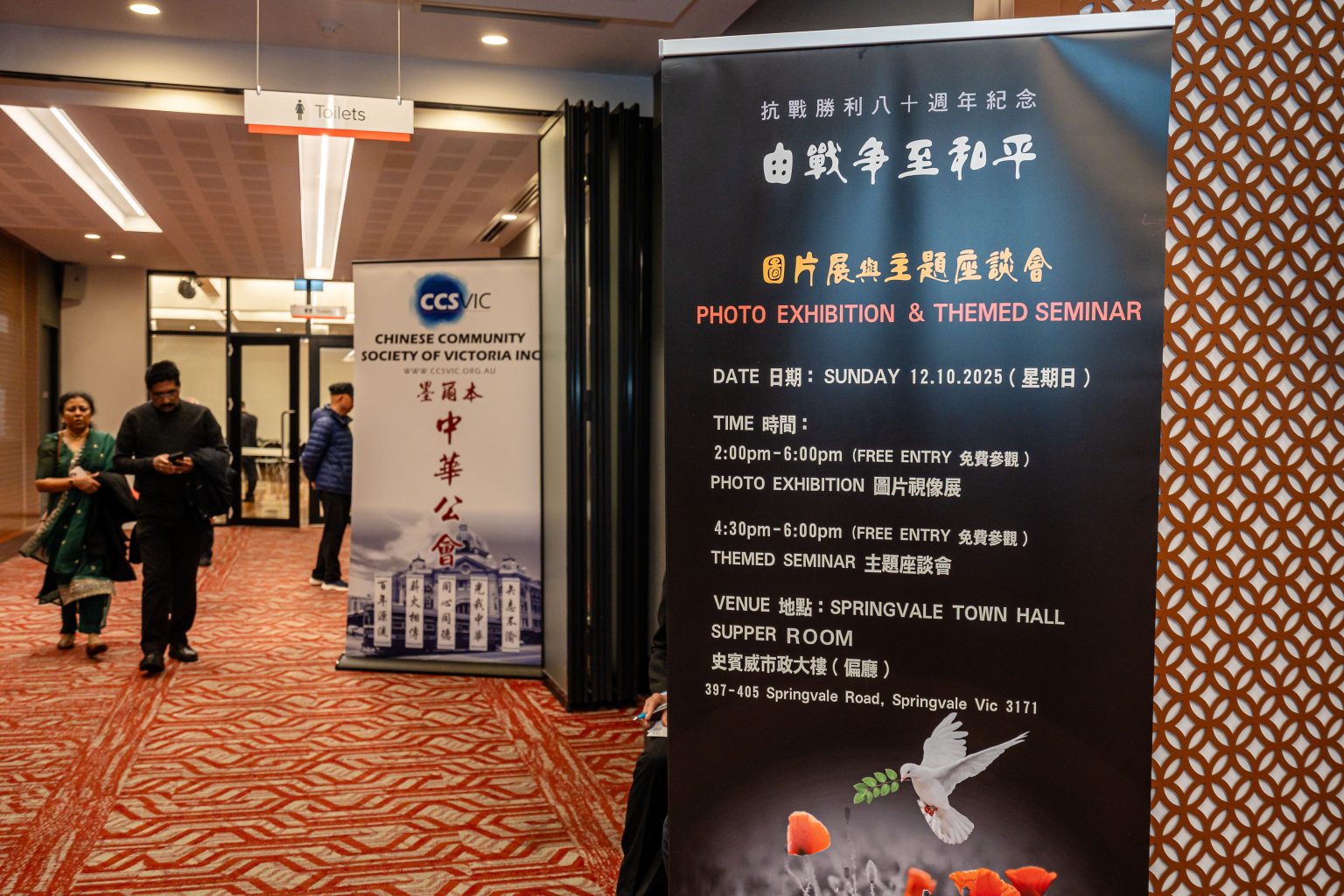
In each issue of Sameway Magazine in June, I usually write reflections on the June Fourth Massacre. The incidents that unfolded in China on that day in 1989 altered the life paths of my generation and myself. Additionally, every October, I reflect on China’s experiences over the past century. In 2011, encouraged by Taiwanese historian Dr. Gary Lin Song-huan, Sameway published a special commemorative edition every two months leading up to the centenary features publication of Republic of China. That October, we released the Centennial Special Edition exploring a century of modern Chinese history. This year marks the 80th anniversary of the victory over Japanese invasion of China. Not only did China hold a military parade on September 3rd, but Melbourne’s overseas Chinese community also seized this opportunity to organize various commemorative events.
While China’s victory in the War against Japan invasion is undoubtedly a cause for celebration among global Chinese communities, earlier this year, Mr. Bill Lau of the Chinese Youth Society of Melbourne CYSM discussed with me: What connection can today’s generation, raised in Melbourne, possibly have with the War? What should this generation commemorate? How could the Nanking Massacre, the Siege of Shanghai, and the major battles be connected to their generation? At the time, I suggested that the Sino-Japanese War could be traced from the September 18 Incident of 1931, through the Xi’an Incident of 1936 and the Marco Polo Bridge Incident of 1937 that ignited full-scale war, ending in 1945. Doesn’t this resemble Russia’s invasion of Crimea in 2013, and the ongoing Russia-Ukraine conflict that has now stretched beyond the past three years?
Though Japan’s invasion of China unfolded on Chinese soil while the European war had yet to begin, it was entangled in the complex web of alliances and rivalries among nations worldwide. The European war erupted two years later, while the Pacific War saw U.S. entry after the 1941 Pearl Harbor attack. This demonstrates how the Sino-Japanese War continuously constrained the progress of the German-Japanese alliance. Reflecting on this historical period, I believe it offers profound insights into the unfolding global landscape today.
In China, everything operates under state control. The national history taught to students is entirely written by the Communist Party, and the resistance against Japan has historically received scant mention. Yet in recent years, China has vigorously promoted the narrative that the Communist Party led the anti-Japanese struggle. By stoking anti-Japanese sentiment, it has ignited Chinese nationalism, turning condemnation of Japanese militarism into official policy. On the 70th and 80th anniversaries of the War of Resistance, China held grand military parades to showcase its growing national strength. Consequently, the facts surrounding the War have garnered attention within Chinese communities worldwide.
The question of who led the resistance against Japan is actually quite straightforward to discern. When Japan began its aggression against China, the Chinese Communist Party had only recently been established and had not yet assumed governance over China. Its military strength was nowhere near what it is today. To describe the Communist Party as the main force in the resistance at that time, or as leading China’s fight against Japan, defies basic common sense. It is evident that over the past two decades, the renewed emphasis on the hatred of Japan’s invasion of China and its current threats to China is nothing more than political propaganda, not worthy of serious debate. Yet, under prolonged political indoctrination, it is indeed concerning to consider how well the younger generation of Chinese, raised in today’s China, truly grasp the facts of the Sino Japannese War.
In the commemorative events organized by various Melbourne groups this year, Mr. Bill Lau particularly emphasized that the cultural variety show should center on presenting history, allowing performers and audiences alike to revisit authentic historical events. Additionally, community education was conducted through bilingual historical photo exhibitions and the publication of a special publication. I believe this is a very sound approach. However, at one symposium I attended, certain community leaders focused solely on condemning the Communist Party for seizing mainland power through the war effort. They clearly exploited the commemoration as a platform for political posturing, which was deeply disappointing.
Undoubtedly, the eight-year War of Resistance exhausted the Nationalist forces while the Communists conducted propaganda and education campaigns, winning popular support. Furthermore, the Nationalist government’s corrupt and incompetent rule led to a deteriorating post-war economy, ultimately resulting in the transfer of rule in China and shaping today’s political landscape. It can be said that Japan’s invasion profoundly influenced contemporary Chinese politics. However, portraying this war solely as a calamity brought about by the Communist Party does not tell the whole story.
For those of us who grew up and were educated in Hong Kong or overseas Chinese communities with open access to information, commemorating the resistance against Japan should deepen our understanding of today’s global landscape. As for the next generation or younger cohorts, I firmly believe we bear the responsibility to preserve contemporary historical events through media. We must enable them, through education, to develop critical thinking skills and uncover the truth of history.
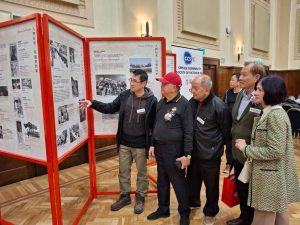
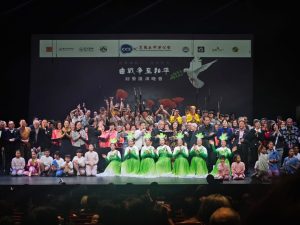
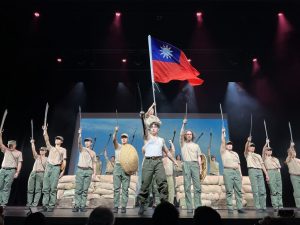
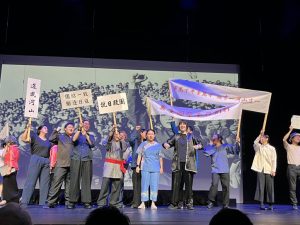
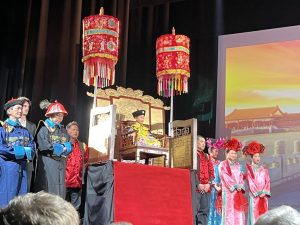
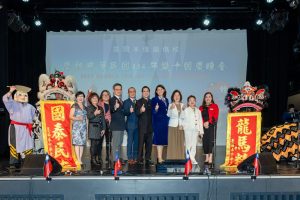
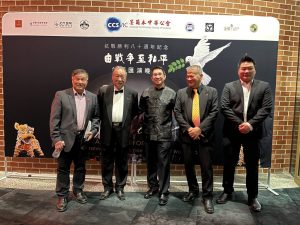
Mr. Raymond Chow
Published in Sameway Magazine on 24 October 2025
Features
History Written Under Control: Comparing East and West, and Resisting Twisted Narratives
Published
3 days agoon
October 23, 2025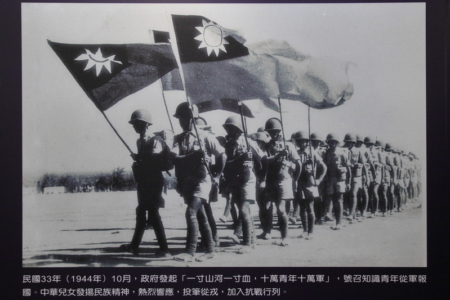
East And West’s Different Historical Views
History helps us understand and learn from the past. Most people agree that it is important, but the way Eastern and Western countries record history can be very different. These differences can cause confusion, disagreements, or even disputes over what really happened.
With the rise of digital media, how countries tell the story of WWII can be very different. China’s role in the war is described in various ways, showing how the media can sometimes twist history with propaganda or misinformation. We hope to cite examples of how the role of China in WWII has been documented differently, in order to detail the importance of the media’s role in twisting historical events through propaganda and disinformation.
First, China and Western countries record history differently. In the West, historical documents are stored in archives, and writers can usually record events freely. In contrast, historical China relied on a chain of official historians who copied records left earlier dynasties to write about the past dynasty. These recording historians couldn’t openly record events that will criticize the then emperors (such as iron fist rulership), as doing so could put them and their families in danger or even get exterminated.
Of course, Western history isn’t perfect either. From an outsider’s point of view, people often see the same events differently, even on how a country is invaded. For example, any elderly Chinese might strongly defend China’s actions in the Sino-Japanese wars, while western scholars may consider many factors like land disputes, political conflicts, and ideology when explaining about the war.
Western countries often value knowledge and individual thinking for everyone. China, on the other hand, has a long history of centralized control over information. Even before printing technology was established, China had a unified written language and centralized monitored historians, to allow government control on how history was recorded. Japan had a central government too, but regional differences in culture and record-keeping still existed. Smaller countries like Laos relied more on local communities and oral traditions to preserve historical records. These examples show that whether a society values individualism or collectivism can greatly affect how history is written and remembered.
Because of this difference, history can easily be twisted when personal or political interests are involved. Today, traditional historians are fading into the sunset, slowly being replaced by 24/7 news media. If countries continuously presenting biased or incomplete versions of events, the public’s understanding becomes confused and biased. Governments or storytellers may ignore events that don’t fit their desired narrative, leaving important truths hidden.
China’s current education on the Sino-Japanese Wars
For example, Chinese textbooks often present the CCP as the main force leading the fighting against the Japanese, but that’s not entirely accurate. The Nationalist leader Chiang Kai-shek actually led the early efforts, reluctantly joining forces with the CCP after the Xi’an Coup. In fact, Japan’s invasion of China began earlier than the 1937 Lugou Bridge / Marco Polo Bridge Incident.
The CCP often blames Manchukuo for allowing the Japanese army in invading Manchuria, but this reflects only part of the truth. While the Manchurians had some influence over that area, Manchuria was controlled by warlords, not the central Chinese government, that was Republic of China at that time. Puyi, the puppet leader, was influenced by advisors to took money from Japan and became a puppet. Looking at events from different perspectives shows how interpretations can be distorted. For example, one could ask: what if Chiang Kai-shek delayed action to avoid alerting the enemy? Even small changes like this can shape how we view the invasion’s seriousness.
The CCP also emphasizes that Chinese soldiers fought bravely while Western countries refused to help. Their narrative suggests that foreigners only cared about land and resources of China, but that’s only partly true. Britain did pressure the Qing dynasty to give up Hong Kong, but European countries and the USA avoided sending troops mainly for diplomatic reasons. Before Japan attacked Pearl Harbor, sending forces to China could have risked a more extensive war with Japan. Instead, the West provided weapons and supplies to the Nationalist government at that time. In hindsight, this situation is somewhat similar to the recent, three year-long Russian-Ukraine war.
The Tale of Australian William Donald
CCP influence has affected global perceptions, leading some Western countries to avoid independent research. Many Australians, for example, are unaware that some of their citizens had played key roles in the War in China with Japan. One notable figure is the Australian journalist William Henry Donald, who was deeply involved.
Donald started as a journalist and foreign correspondent before becoming an advisor of the Nationalist government in China. During the 1911 Revolution, he helped Dr Sun Yat-sen’s short-lived government negotiate with foreign powers, moving beyond reporting to active mediation. Initially, Donald admired Japan and even received a Japanese honour for his coverage of the Russo-Japanese War (1904–05). By 1915, however, he criticized Japanese imperialism and warned the West about its expansionist actions.
Donald played a crucial role during the Xi’an Coup, mediating between major Chinese leaders. His efforts helped secure Chiang Kai-shek’s release and the formation of a reluctant alliance with the CCP. Later, he disagreed with Chiang in 1940 over policy toward Germany. During the Pacific War, Donald was captured in Manila in 1942 but was freed in 1945. Afterward, his influence gradually declined.
Despite his decades-long involvement, historians have largely overlooked Donald’s contributions, whether advising Chiang, mediating coups, or supporting Dr Sun Yat-sen. His role is complex and less dramatic than headlines like “Chiang vs. Mao” or “Japan Invades”, so it is often ignored. In Australia, documentation about him is limited, with primary sources stored in China or specialized archives. Because Australian history education focuses more on colonial and ANZAC history, Donald’s contributions have faded from public awareness.
Chinese authorities rarely highlight Donald either. He was not a combat hero, and his advisory role could be politically inconvenient. The CCP tends to downplay internal compromises or foreign contributions, focusing instead on its own post-war achievements. Even in normal broadcasting, the media celebrating China’s journey post-war isn’t too different.
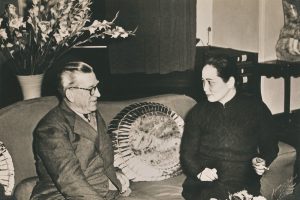
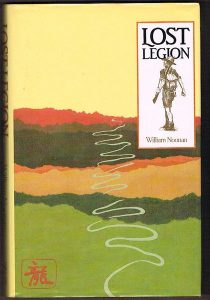
How CCP Centralization Affects Historical Documentation
Unlike many Western countries, which value history for education and heritage, China often emphasizes national pride over strict accuracy. This approach leaves younger generations unaware or unwilling to question historical events. The CCP has used systematic omission and withdrawal of all related records— sometimes called ‘amnesia therapy’ (失憶治療法) by scholars — to hide uncomfortable truths, like the Tiananmen Square Massacre. By controlling school curricula, the party successfully shapes collective memory, erasing or reframing events to suit its narrative.
In contrast, Western countries often debate controversial history publicly, offering multiple perspectives for critical analysis. The CCP also shapes views of other nations, like Japan, portraying it as a continued threat even though imperialism has ended. These examples show that history is rarely objective; it can be twisted to serve political goals. Recognizing these distortions is vital for developing critical thinking in future generations.
The CCP’s indoctrination is well-known but not unique in Asia. Postwar Japan focused on pacifism and democracy in textbooks, downplaying imperial aggression. South Korea and Taiwan have alternated between nationalist and democratic interpretations. Smaller countries like Vietnam, Laos, and Cambodia relied on oral histories and local records, allowing communities to shape memory. These examples show that centralized versus decentralized record-keeping strongly affects how generations perceive the past, emphasizing that control over history shapes national identity.
Australia’s Involvement in the Second Sino-Japanese War
The CCP’s influence on history goes beyond China. Cultural programs like Confucius Institutes promote party-aligned narratives internationally, shaping textbooks, museum exhibits, and media coverage abroad. Ignoring other perspectives, like those from Australia or Japan, can create a skewed understanding of WWII. This shows that controlling historical narratives isn’t just domestic indoctrination; it’s also a form of soft power.
Australia has made its own mistakes in recording history. While it doesn’t claim any credit as the CCP, it has largely hidden its involvement in China through the little-known Mission 204. In 1942, around 250 Commonwealth troops, including 48 Australians from the 8th Division, were sent to aid Chiang Kai-shek. Despite logistical difficulties and tense relations with Chinese commanders, these troops carried out successful operations, including ambushes and a notable raid on Japanese barges near Poyang Lake.
Mission 204, however, was withdrawn in November 1942 due to internal politics and health issues in the unit. Later, the Chinese Nationalist Party was forced to retreat to Taiwan by the CCP. For decades, Australia largely ignored or hid this history, only resurfacing clues in 2023. While avoiding CCP politics is understandable, it’s unfair to deny the public knowledge of Australia’s wartime actions, which effectively allows the CCP to dominate the narrative.
These examples show that celebrations of China surviving the Sino-Japanese War and WWII are often shaped by political agendas and media control. This leaves the public with incomplete, biased, or deliberately obscured views. Without critical analysis or access to multiple sources, key figures, like William Henry Donald, and events can be forgotten or misrepresented.
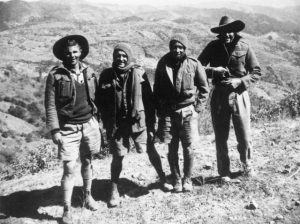
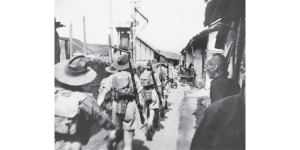
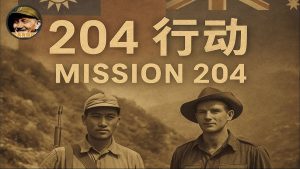
Viewing History Through A Critical Lens
Furthermore, whether in textbooks or news reports, the same historical events can be portrayed very differently depending on who tells the story. Motivations such as national pride, political advantage, or control over public narrative all highlight the need for careful comparative study. Governments exploit each new, impressionable generation by spreading half-truths or even outright lies under the guise of patriotism and unity. When in reality, it’s about framing themselves as ‘heroes’. The longer this continues, the fewer people will question the fabricated histories imposed by those in power.
When reading history, we shouldn’t take it at face value. What gets celebrated is rarely the full story, as many crucial voices stay buried under mainstream narratives. To avoid being misled by half-truths or polished myths, readers must take proactive steps to seek balance and truth.
For example, readers can compare news sources from different cultural backgrounds. Take the case of war survival anniversaries: a Chinese state outlet might glorify its own soldiers, while a Western outlet could focus on diplomatic strategy, such as why Western powers, despite ties with the invaded nation, chose not to intervene militarily. These contrasts reveal how bias shapes every narrative.
Another approach is to encourage counterfactual thinking, which is by exploring ‘what if’ scenarios to engage with history critically. Asking questions like “What if Chiang Kai-shek had acted sooner?” or”How might events differ if textbooks included multiple perspectives?” pushes readers to think beyond surface facts. By presenting alternative viewpoints side by side, educators and media can remind younger generations that history is layered, contested, and never entirely fixed.
News Media’s Historical Responsibilities
Additionally, should news outlets depend less on governmental sources, in order to report historical events to newer generations? For instance, the CCP often promotes itself as the sole hero in the Sino-Japanese war, overlooking many other factors that contributed to Japan’s defeat. To provide a fuller picture, journalists should consult academic historians from diverse backgrounds and archives. If local reporters are unable to do so, international media should avoid over-reliance on Chinese outlets, helping to diversify perspectives. Even when governments provide data, reporters must cross-check multiple sources: comparing war casualty numbers, dates, and accounts from different national archives.
To combat biased or incomplete narratives, media organizations must embrace investigative journalism. Rather than relying solely on press releases or government celebrations, journalists should explore archives, personal accounts, and lesser-known sources. This approach can uncover overlooked contributors, hidden controversies, or forgotten stories, such as the decades-long influence of William Henry Donald in China. Without such diligence, these stories risk being lost to history.
Other than Official Historical Narratives
Historical events are rarely one-dimensional. To ensure accuracy, news outlets should present both domestic and foreign perspectives. For instance, reporting on the Sino-Japanese War should not rely solely on CCP or Chinese Nationalist sources; Japanese accounts, Western observers, and even oral histories from survivors’ descendants can provide valuable insight. By comparing these perspectives, readers gain a deeper understanding of the complexity of events and can see where bias, pride, or self-interest has shaped narratives.
History is often told through the lens of nations, prominent leaders, or major battles, leaving countless contributors invisible. Unsung figures – nurses on the frontlines, translators bridging cultural and linguistic gaps, local militias defending communities, and ordinary civilians navigating war — have all shaped outcomes without formal recognition. Grassroots organizers and community leaders often mitigated famine, displacement, or political oppression, yet their stories rarely appear in mainstream textbooks. Highlighting these individuals challenges simplified nationalist accounts and invites readers to critically examine history from multiple angles. By including personal stories, letters, diaries, and oral histories, historians and educators can provide a richer, more nuanced understanding, showing that history is not only the story of leaders but also of ordinary people whose everyday decisions ripple across generations.

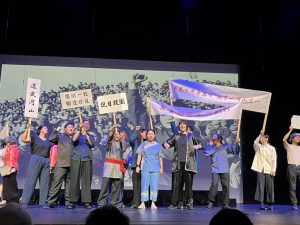
Importance of Multifaceted Historical Narrations
Historical narratives are not confined to academic debate; they actively shape contemporary geopolitics and international relations. The CCP’s control over historical interpretation has profoundly affected public perception of Taiwan, the South China Sea, Hong Kong, and Japan, often framing policies as defensive or restorative to fit a particular national narrative. Textbooks emphasizing the ‘century of humiliation’ or heroic struggles against foreign powers can reinforce domestic support for assertive policies abroad.
Understanding these manipulations shows how governments leverage history to justify policy, cultivate national sentiment, and shape international perception. Media, educational programs, and cultural diplomacy can extend this influence globally, subtly guiding how other countries interpret events involving China. Recognizing these dynamics is crucial for analysts, educators, and citizens, highlighting that history is not merely a record of the past but also a tool actively deployed to influence present-day politics and international relationships.
Digital Era’s Challenges Towards History
The landscape of historical narrative has further shifted in the digital age. Social media platforms are not just spaces for connection but arenas for ideological competition. TikTok, WeChat, YouTube, and Twitter/X have become battlegrounds for competing interpretations of history. Viral clips, memes, and algorithmically promoted content often shape perceptions more strongly than formal education. Algorithms tend to favor content that evokes strong emotions – national pride, outrage, or sensationalism – reinforcing particular viewpoints while suppressing others. Unlike these fast-moving but potentially biased feeds, traditional textbooks, though limited in perspective, are curated and vetted to ensure factual consistency.
For younger generations growing up online, cultivating media literacy, critical thinking, and the ability to cross-reference multiple sources is essential. This is not only to resist propaganda but also to engage with history in its full complexity. Encouraging discussions about the origins and credibility of online content empowers students to recognize how narrative manipulation occurs in real time. It prepares them to approach information critically throughout their daily lives.
Finally, historical reporting should be more understandable to younger generations. The media can leverage multimedia tools – short videos, infographics, timelines, and interactive articles – to break down complex events. Clear, engaging formats, using layman language and visuals, can prevent oversimplification and reduce the risk that a single, potentially biased narrative dominates public understanding.
In an age of propaganda, selective memory, and curated narratives, readers must approach history critically. By seeking multiple sources, questioning official accounts, and embracing diverse perspectives, we can resist half-truths and uncover the full story. History is not just a record of the past; it is a tool for understanding the present and shaping a more informed future. If media, educators, and citizens take these steps seriously, hidden figures like William Henry Donald and many others who shaped history behind the scenes can finally receive the recognition they deserve.
Editorial : Raymond Chow, Jenny Lun
Photo: Internet
Published in Sameway Magazine on 24 October, 2025
Features
Cohealth Service Cutoff — Victorian Government Cannot Ignore
Published
3 days agoon
October 23, 2025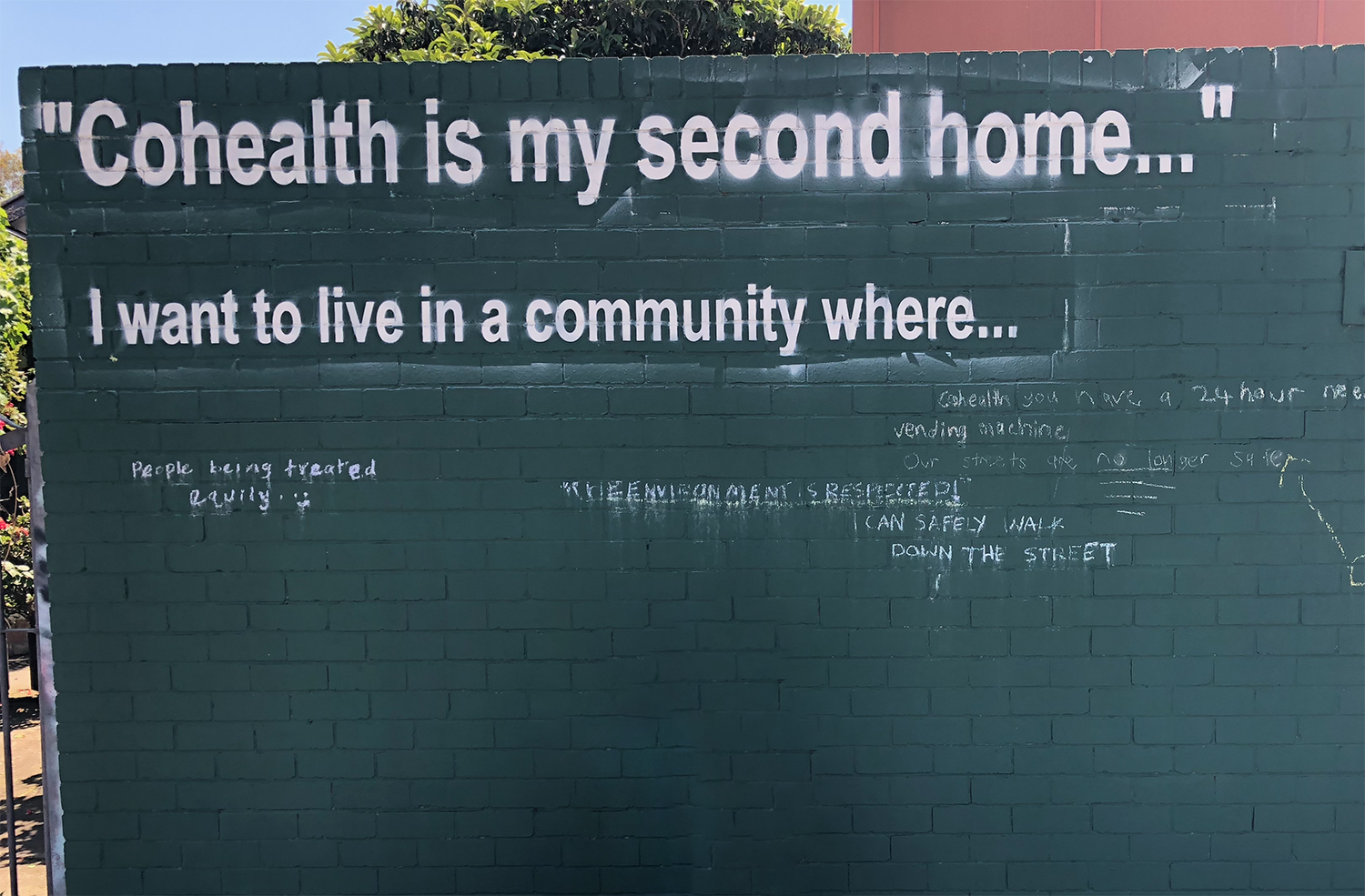
On October 16, Cohealth—one of Australia’s largest community health organizations and a non-profit medical institution—announced it would close three of its clinics. The news immediately sparked widespread public debate and criticism. The affected clinics are located in Collingwood, Fitzroy, and Kensington. The Fitzroy and Kensington clinics will cease general practitioner (GP) and consultation services this December, though they will continue providing specialized support for alcohol, drug, and domestic violence issues. The Collingwood centre is scheduled for full closure next June.
The closures will directly impact approximately 12,500 patients, resulting in 20 doctors losing their jobs and 44 nurses facing reassignment or redundancy. These clinics have long provided vital primary healthcare services to low-income individuals, the homeless, refugees, domestic violence survivors, and those with chronic illnesses, serving as an indispensable health support network within the community. However, due to insufficient funding, rising costs, and operational pressures, these services are now being forced to cease.
Nicole Bartholomeusz, CEO of Cohealth, stated that the cessation of services reflects “multiple and complex pressures, including decades of underinvestment, aging infrastructure, and funding models that don’t match actual needs or the type of care required.” She noted: “The funding we receive is only sufficient to provide standard care, but we actually serve high-need patients who often require extended appointments and comprehensive case management tailored to each individual.”
Cohealth’s current Medicare subsidy only covers physician salaries, failing to account for nurses, receptionists, and other operational costs. As wages and supply costs rise, the annual gap between clinic operating expenses and Medicare funding continues to widen.
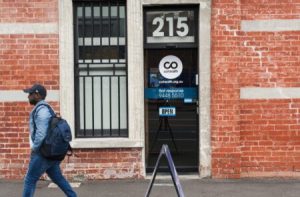
Reforms Too Late, Support Too Little
In truth, Cohealth’s predicament did not emerge suddenly but resulted from years of accumulated challenges. Although the federal Labor government has pushed Medicare reforms in recent years to enhance the sustainability of the universal healthcare system—such as the upcoming Bulk Billing Practice Incentive Program (BBPIP) launching November 1st, which will expand Medicare coverage, encourage clinics to maintain bulk billing, and provide additional funding for facility upgrades and team expansion— This initiative aims to improve access and affordability of healthcare services, with approximately 4,800 clinics expected to benefit.
However, for Cohealth, this reform appears to have come too late. The root problem lies not solely at the federal level, but in the Victorian government’s long-standing neglect of the actual health needs within grassroots communities. The poverty, homelessness, addiction, and trauma issues plaguing local communities have long exceeded the capacity of standard clinics. Yet the Victorian government has failed to provide additional support or establish stable funding mechanisms to sustain non-for-profit healthcare providers.
Cohealth identifies two primary causes for the current crisis: First, insufficient Medicare funding from the federal government for managing complex patients; Second, the Victorian government has failed to fund upgrades for the aging facilities at the Collingwood clinic.
Cohealth has repeatedly called for government support over the years. As early as 2022, Cohealth issued a statement noting that while they supported the government’s health-focused budget, the community health model—which played a critical role during the pandemic—was once again being overlooked. At that time, Cohealth emphasized the need for comprehensive investment across the entire healthcare sector to strengthen the health system as a whole.
The clinic’s facilities have long been outdated, with roof leaks forcing appointment cancellations. Despite multiple funding applications to authorities over the years, no substantive response has been received. Infrastructure Victoria’s report highlights that government funding for community services is fragmented and inadequate. The federal government has yet to establish dedicated funding for community health infrastructure. Even though the Australian government allocated $117 billion to health and medical services for 2024-25, community health organizations received only 0.3% of Victoria’s annual health infrastructure expenditure of approximately $2 billion.
Amid chronic funding shortages and sluggish government reforms, the state government’s disregard for community needs and inaction ultimately sealed the fate of these clinics. This underscores the state government’s core responsibility in ensuring the continuity of primary healthcare services.
Who is accountable for healthcare quality and service delivery?
In fact, community healthcare systems did not originate from government initiatives but from charitable and faith-based traditions. Early hospitals were often founded by churches or charitable organizations with a simple mission: to provide basic care to the poor and vulnerable through empathy and compassion. Healthcare then embodied social conscience rather than being a product of policy or systems.
As society modernized and public health concepts emerged, governments gradually assumed responsibility, incorporating health into the realm of “public duty.” The original intent behind this shift was noble—to ensure equal access to healthcare for all. Yet the process of institutionalization and bureaucratization introduced new challenges: the original “people-centred” care became diluted by layers of administrative procedures and economic logic. Healthcare services increasingly emphasized efficiency and output, gradually losing its human warmth.
Non-profit medical institutions like Cohealth represent a continuation of this historical trajectory. They uphold the founding spirit of charitable healthcare—serving vulnerable communities while upholding the belief that everyone deserves the right to health and equal access to medical care. Yet in reality, these organizations rely on government subsidies and unstable funding sources to sustain their operations.
The contradiction lies in the fact that as societies grow wealthier, public healthcare systems should be better equipped to protect the vulnerable. Yet the opposite occurs: medical costs rise relentlessly, resource distribution grows increasingly unequal, and healthcare services become ever more commoditized. In this environment, doctors are forced to complete consultations within “six-minute appointments,” nurses and receptionists operate at breaking point, and patients slip through the cracks of the system, overlooked.
Yet when reflecting on responsibility, the question may extend beyond “Who is to blame?” to “Where should healthcare be headed?”
Should we pursue the endless quest to “cure every disease”? Or should we return to healthcare’s fundamental purpose—ensuring everyone accesses basic health protection?
When the wealthy pay more for faster, better care while the poor endure long queues, has the ideal of equality already been swallowed by market logic?
Take Hong Kong, for instance. As a low-tax society, its citizens enjoy public healthcare at minimal cost—subsidized for life simply by holding a Hong Kong ID card. However, with an aging population and healthcare staff shortages, the public system has been chronically overburdened, leading to months-long waits for emergency rooms and specialist appointments. Consequently, the affluent middle and upper classes turn to private clinics, trading money for efficiency. This creates a healthcare system that appears equitable on the surface but is fundamentally stratified: the government guarantees access to services but not equal speed or quality. In other words, everyone has the right to medical care, but whether you can get better quickly and where you receive treatment depends on how much money you have.
Canada’s public healthcare system, meanwhile, is more idealistic. All residents can access free public healthcare with a health card, free from concerns about high costs. However, long waiting times and uneven resource distribution transform “free” into another form of “cost.” When demand far exceeds supply, fairness and accessibility inevitably clash.
Moreover, should healthcare prioritize “universal access” or ‘quality’? Should governments provide “basic care” or “comprehensive coverage”?
Comparisons with China, Hong Kong, and Taiwan
From an international perspective, Australia’s public healthcare system (Medicare) differs significantly from those in mainland China and Taiwan, each with distinct advantages and disadvantages. Mainland China’s system, dominated by public hospitals, subsidizes basic care through social medical insurance (urban employee/resident insurance). However, due to its massive population and concentration of medical resources in major cities, primary community clinics often struggle to handle high-demand patients—particularly low-income groups and those with chronic conditions. This mirrors Cohealth’s current situation: “resource concentration leading to overflowing demand.”
Taiwan adopted a National Health Insurance (NHI) model emphasizing “one health insurance card, nationwide healthcare coverage,” ensuring basic medical services for all regardless of urban/rural location or income level. NHI strengthens primary care clinics through subsidies and incentives, stabilizing the family doctor system. Nevertheless, disparities in healthcare resource distribution between urban and rural areas persist, and wait times for specialist care can remain excessively long.
In contrast, Australia’s Medicare system pursues fairness and accessibility in theory. Yet in practice, non-profit primary care institutions face chronic funding shortages and aging facilities. While serving predominantly vulnerable populations, these clinics often shoulder service volumes exceeding subsidy coverage. This structural contradiction creates a significant gap between the system’s ideals and its actual service capacity, highlighting a common challenge faced by vulnerable groups under different systems: even with “systemic safeguards,” they may still be marginalized due to inadequate resource allocation.
Australia’s Core Healthcare Contradiction
Returning to Australia itself, the core issue of its healthcare system isn’t a lack of total funding, but rather structural contradictions arising from resource allocation, institutional design, and policy priorities. Medicare is primarily designed for “standard medical services” such as general consultations, basic tests, and medications. However, it does not provide corresponding subsidies for the time, labour costs, and interdisciplinary integrated care required for high-need or complex patients. This leaves vulnerable groups unable to access truly comprehensive healthcare under the existing system.
Non-profit community clinics like Cohealth exist precisely to fill this gap. They offer extended consultations, case management, mental health counselling, addiction and domestic violence support, and even multidisciplinary integrated programs—services standard GP clinics struggle to provide. However, these intensive services are not fully subsidized by Medicare. Combined with limited state investment in primary care infrastructure, clinics face chronic financial strain, ultimately forcing service reductions or partial closures.
Cohealth’s partial closures reflect a deep-seated contradiction within Australia’s healthcare system: equity and accessibility do not equate to substantive care guarantees for high-need populations. While everyone ostensibly has the right to medical care, those requiring prolonged attention and individualized management often survive only by navigating systemic gaps. The institutional design itself thus creates an “invisible inequity” for high-need patients.
Australia’s healthcare also grapples with the dilemma of balancing universal coverage and quality. On one hand, the system must ensure everyone receives at least basic treatment; on the other, complex patients require sufficient time, specialized support, and case management. In reality, however, insufficient government funding and a narrow subsidy structure make achieving both goals difficult. Doctors are forced to rush through consultations, nurses and receptionists operate at capacity, while vulnerable patients languish on waiting lists. Non-profit clinics like Cohealth strive to fill these gaps, but persistent financial pressures and policy constraints render “humanized healthcare” a luxury in practice.
In other words, the core issue with Australia’s public healthcare system isn’t merely about assigning responsibility, but whether the system can return to its founding principle: ensuring everyone accesses basic healthcare while providing high-need patients with adequate resources and compassionate support when required. Cohealth’s predicament serves as a stark warning: without structural adjustments to resource allocation by government and society, the ideal of fairness remains unattainable, and vulnerable groups will continue to be marginalized by the system.
The Victorian Government’s Indisputable Responsibility
While medical policy is set by the federal government, state governments bear responsibility for implementing it according to local realities. Cohealth’s inner-city service area has a population receiving government living subsidies that exceeds the Australian average by more than double, indicating many residents cannot afford private services. The Victorian Government’s refusal to provide financial support to institutions like Cohealth demonstrates a disregard for vulnerable communities.
A similar situation exists in elder care for multicultural communities. While federal funding supports aged care services, research indicates that non-English-speaking seniors benefit most from living in facilities that accommodate their cultural and linguistic backgrounds. Yet, emerging senior communities like the Chinese diaspora receive minimal Victorian government assistance to build suitable aged care facilities. Since 2014, Labor leader Andrews has repeatedly proposed policies to purchase four plots of land for the Chinese and Indian communities to build elderly care facilities. Yet to this day, the Victorian Department of Health continues to leave these sites vacant, failing to hand them over to community organizations to develop services. This demonstrates a dereliction of duty by government officials. This situation bears striking similarities to Cohealth Community Health Services ceasing operations today due to neglect. Should the Victorian Government conduct a thorough review of the Department of Health’s operations?
Editorial : Liz Li, Jenny Lun
Photo: Internet
Published in Sameway Magazine 24 October 2025
Listen Now


October – History

History Written Under Control: Comparing East and West, and Resisting Twisted Narratives

Cohealth Service Cutoff — Victorian Government Cannot Ignore
Anthony Albanese Meets Trump to Discuss Minerals, Defense, and Trade
Louvre Jewelry Heist Steals Historic Treasures

Fraudulent ivermectin studies open up new battleground

Cantonese Mango Sago

FILIPINO: Kung nakakaranas ka ng mga sumusunod na sintomas, mangyaring subukan.

如果您出現以下症狀,請接受檢測。

保护您自己和家人 – 咳嗽和打喷嚏时请捂住

U.S. Investment Report Criticizes National Security Law, Hong Kong Government Responds Strongly

China Becomes Top Destination for Australian Tourists, But Chinese Visitor Return Slows

What Is the Significance of Victorian Premier Jacinta Allan’s First Visit to China?

Albanese Visit to UK Focuses on Domestic Reform, Not Republican Debate

Optus Faces Another “000” Outage, Singtel Bonus Sparks Controversy
Trending
-

 COVID-19 Around the World4 years ago
COVID-19 Around the World4 years agoFraudulent ivermectin studies open up new battleground
-

 Cuisine Explorer5 years ago
Cuisine Explorer5 years agoCantonese Mango Sago
-

 Tagalog5 years ago
Tagalog5 years agoFILIPINO: Kung nakakaranas ka ng mga sumusunod na sintomas, mangyaring subukan.
-

 Uncategorized5 years ago
Uncategorized5 years ago如果您出現以下症狀,請接受檢測。
-

 Cantonese - Traditional Chinese5 years ago
Cantonese - Traditional Chinese5 years ago保护您自己和家人 – 咳嗽和打喷嚏时请捂住
-

 Uncategorized5 years ago
Uncategorized5 years agoCOVID-19 檢驗快速 安全又簡單
-
Uncategorized5 years ago
在最近的 COVID-19 應對行動中, 維多利亞州並非孤單
-

 Uncategorized5 years ago
Uncategorized5 years agoHow to wear a face mask 怎麼戴口罩


